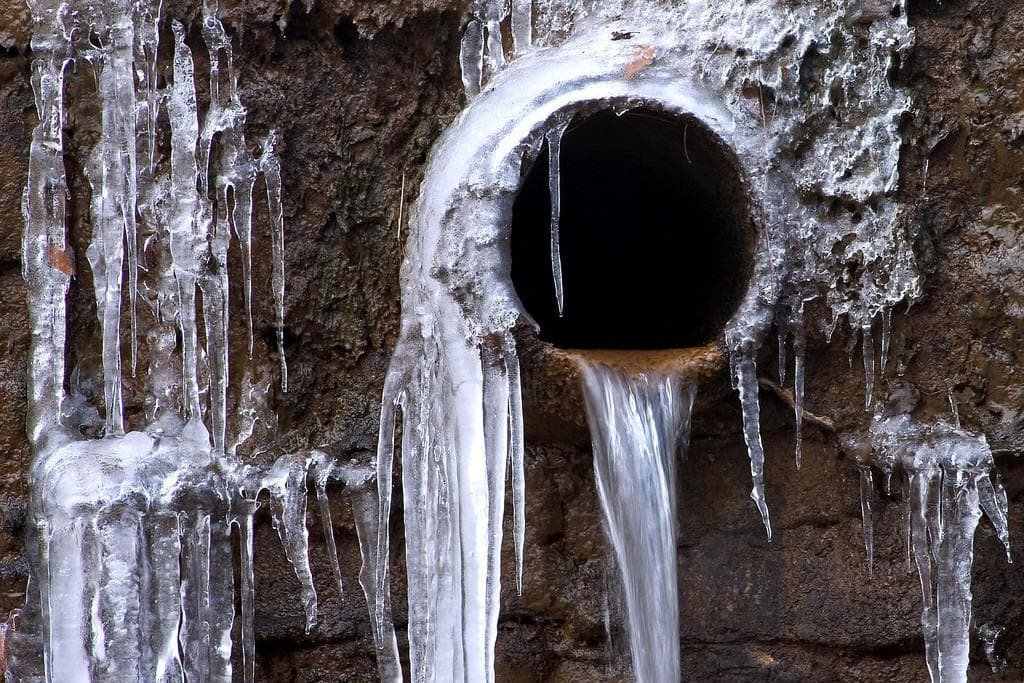They are making a number of great points relating to Preventing and dealing with frozen pipes in general in this great article followed below.

Cold weather can damage your plumbing, specifically by freezing pipelines. Right here's how to stop it from happening and what to do if it does.
Intro
As temperatures decrease, the risk of icy pipes boosts, possibly resulting in costly fixings and water damages. Comprehending just how to avoid frozen pipelines is crucial for homeowners in cool environments.
Prevention Tips
Shielding at risk pipelines
Cover pipelines in insulation sleeves or make use of warmth tape to shield them from freezing temperatures. Concentrate on pipelines in unheated or outside locations of the home.
Home heating strategies
Maintain interior rooms adequately heated up, particularly areas with plumbing. Open closet doors to enable warm air to distribute around pipes under sinks.
Just how to identify frozen pipes
Look for decreased water flow from faucets, unusual smells or sounds from pipelines, and noticeable frost on exposed pipelines.
Long-Term Solutions
Structural adjustments
Consider rerouting pipes far from outside wall surfaces or unheated locations. Include added insulation to attic rooms, cellars, and crawl spaces.
Upgrading insulation
Buy top quality insulation for pipes, attics, and wall surfaces. Proper insulation aids preserve regular temperature levels and minimizes the risk of frozen pipelines.
Protecting Outside Pipes
Garden pipes and exterior taps
Detach and drain pipes garden hoses prior to winter months. Set up frost-proof faucets or cover outside faucets with shielded caps.
Understanding Frozen Pipes
What triggers pipes to ice up?
Pipelines freeze when exposed to temperature levels listed below 32 ° F (0 ° C) for expanded periods. As water inside the pipelines freezes, it broadens, taxing the pipeline wall surfaces and potentially creating them to burst.
Dangers and damages
Icy pipelines can result in water disruptions, residential or commercial property damages, and costly repair work. Ruptured pipelines can flood homes and trigger comprehensive structural damages.
Indicators of Frozen Pipeline
Determining frozen pipes early can stop them from breaking.
What to Do If Your Pipes Freeze
Immediate actions to take
If you believe frozen pipelines, maintain faucets available to alleviate pressure as the ice thaws. Use a hairdryer or towels taken in hot water to thaw pipelines gradually.
Final thought
Stopping icy pipes calls for aggressive measures and fast feedbacks. By comprehending the causes, indicators, and safety nets, home owners can secure their pipes throughout winter.
5 Ways to Prevent Frozen Pipes
Drain Outdoor Faucets and Disconnect Hoses
First, close the shut-off valve that controls the flow of water in the pipe to your outdoor faucet. Then, head outside to disconnect and drain your hose and open the outdoor faucet to allow the water to completely drain out of the line. Turn off the faucet when done. Finally, head back to the shut-off valve and drain the remaining water inside the pipe into a bucket or container. Additionally, if you have a home irrigation system, you should consider hiring an expert to clear the system of water each year.
Insulate Pipes
One of the best and most cost-effective methods for preventing frozen water pipes is to wrap your pipes with insulation. This is especially important for areas in your home that aren’t exposed to heat, such as an attic. We suggest using foam sleeves, which can typically be found at your local hardware store.
Keep Heat Running at 65
Your pipes are located inside your walls, and the temperature there is much colder than the rest of the house. To prevent your pipes from freezing, The Insurance Information Institute suggests that you keep your home heated to at least 65 degrees, even when traveling. You may want to invest in smart devices that can keep an eye on the temperature in your home while you’re away.
Leave Water Dripping
Moving water — even a small trickle — can prevent ice from forming inside your pipes. When freezing temps are imminent, start a drip of water from all faucets that serve exposed pipes. Leaving a few faucets running will also help relieve pressure inside the pipes and help prevent a rupture if the water inside freezes.
Open Cupboard Doors
Warm your kitchen and bathroom pipes by opening cupboards and vanities. You should also leave your interior doors ajar to help warm air circulate evenly throughout your home.

I'm certainly very involved in Winter Plumbing Precautions: Preventing Frozen Pipes and I am praying you appreciated the new blog post. Sharing is nice. You won't know, you may very well be doing someone a favor. We enjoy your readership.
Call Today